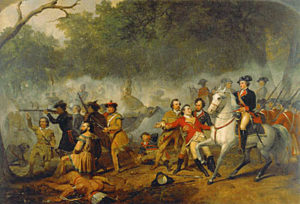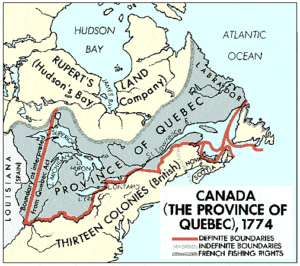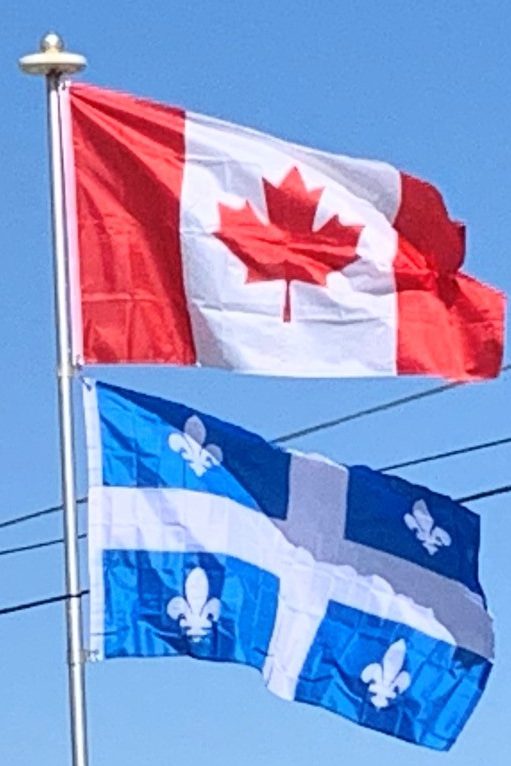New France became a Royal Province in 1663 under King Louis XIV of France with a Sovereign Council that included intendant Jean Talon. The population grew slowly under French rule, thus remained relatively low as growth was largely achieved through natural births, rather than by immigration. To encourage population growth and to redress the severe imbalance between single men and women, King Louis XIV sponsored the passage of approximately 800 young French women (known as les filles du roi) to the colony. Most of the French were farmers (“Canadiens” or “Habitants“), and the rate of population growth among the settlers themselves was very high.
Seven Years’ War and Capitulation of New France:
Authorities in New France became more aggressive in their efforts to expel British traders and colonists from the Ohio Valley.

They began construction of a series of fortifications to protect the area. In 1754, George Washington launched a surprise attack on a group of Canadian soldiers sleeping in the early morning hours. It came at a time when no declaration of war had been issued by either country. This frontier aggression known as the Jumonville affair set the stage for the French and Indian War (a US designation; in Canada it is usually referred to as the Seven Years’ War, although French Canadians often call it La guerre de la Conquête [“The War of Conquest”]) in North America. By 1756, France and Britain were battling the Seven Years’ War worldwide. In 1758, the British mounted an attack on New France by sea and took the French fort at Louisbourg.
On September 13, 1759, the British forces of General James Wolfe defeated those of French General Louis-Joseph de Montcalm on the Plains of Abraham outside Quebec City. With the exception of the small islands of Saint Pierre and Miquelon, located off the coast of Newfoundland, France ceded its North American possessions to Great Britain through the Treaty of Paris (1763) in favor of gaining the island of Guadeloupe for its then-lucrative sugar cane industry. The British Royal Proclamation of 1763 renamed Canada (part of New France) as the Province of Quebec.
Quebec Act:
With unrest growing in the colonies to the south, which would one day grow into the American Revolution, the British were worried that the French-speaking Canadians might also support the growing rebellion. At that time, French-speaking Canadians formed the vast majority of the population of the province of Quebec (more than 99%) and British immigration was not going well. To secure the allegiance of the approximately 90,000 French-speaking Canadians to the British crown, first Governor James Murray and later Governor Guy Carleton promoted the need for change. There was also a need to compromise between the conflicting demands of the French-speaking Canadian subjects and those of newly arrived British subjects. These efforts by the colonial governors eventually resulted in enactment of the Quebec Act of 1774.

The Quebec Act provided the people of Quebec their first Charter of Rights and paved the way to later official recognition of the French language and French culture. The act also allowed the French speakers, known as Canadiens, to maintain French civil law and sanctioned freedom of religion, allowing the Roman Catholic Church to remain, one of the first cases in history of state-sanctioned freedom of religious practice.
Effects of the American Revolution:
Although the Quebec Act was unrelated to the events in Boston of 1773, and was not regarded as one of the Coercive Acts, the timing of its passage led British colonists to the south to believe that it was part of the program to punish them. The Quebec Act offended a variety of interest groups in the British colonies. Land speculators and settlers objected to the transfer of western lands previously claimed by the colonies to a non-representative government. Many feared the establishment of Catholicism in Quebec, and that the French Canadians were being courted to help oppress British Americans.
